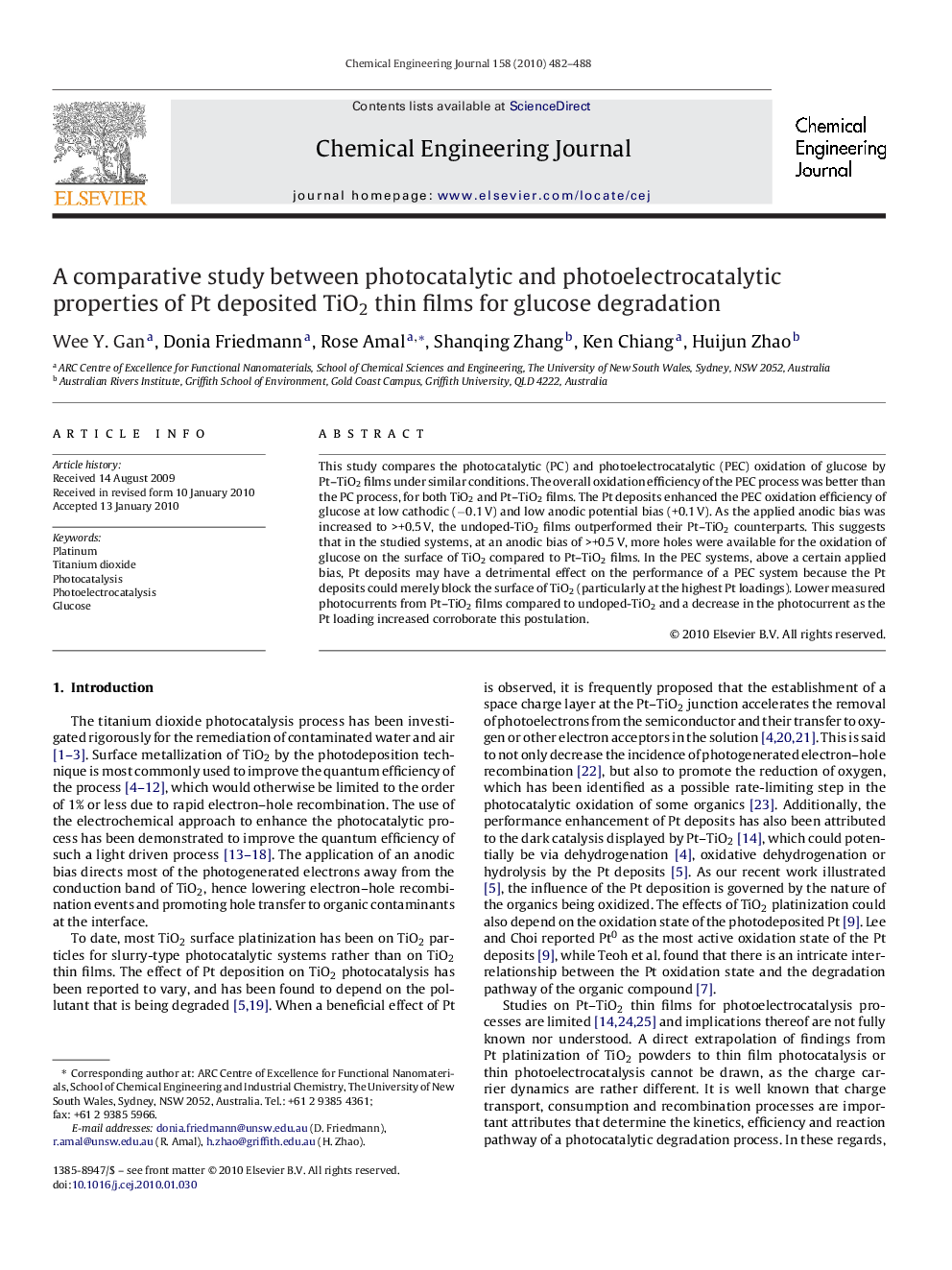| Article ID | Journal | Published Year | Pages | File Type |
|---|---|---|---|---|
| 151666 | Chemical Engineering Journal | 2010 | 7 Pages |
This study compares the photocatalytic (PC) and photoelectrocatalytic (PEC) oxidation of glucose by Pt–TiO2 films under similar conditions. The overall oxidation efficiency of the PEC process was better than the PC process, for both TiO2 and Pt–TiO2 films. The Pt deposits enhanced the PEC oxidation efficiency of glucose at low cathodic (−0.1 V) and low anodic potential bias (+0.1 V). As the applied anodic bias was increased to >+0.5 V, the undoped-TiO2 films outperformed their Pt–TiO2 counterparts. This suggests that in the studied systems, at an anodic bias of >+0.5 V, more holes were available for the oxidation of glucose on the surface of TiO2 compared to Pt–TiO2 films. In the PEC systems, above a certain applied bias, Pt deposits may have a detrimental effect on the performance of a PEC system because the Pt deposits could merely block the surface of TiO2 (particularly at the highest Pt loadings). Lower measured photocurrents from Pt–TiO2 films compared to undoped-TiO2 and a decrease in the photocurrent as the Pt loading increased corroborate this postulation.
